Dear Caldwell,
Last fall, several Caldwell members traveled to the Holy Land. As we pause in the three days from Maundy Thursday to Easter Sunday, I invite you to walk with Jesus and the scriptures through some of the pictures from that trip and consider these questions.
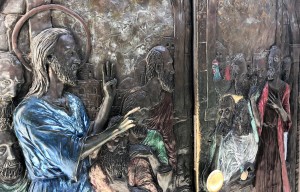
Then Jesus answered, “Will you really lay down your life for me? I will tell you the truth, before the rooster crows, you will disown me three times.” – John 13:37-38
This plaque is on a building along the path to Gethsemane. See how Peter (right in red) is saying, “Who, me?”
Do we promise Christ one thing and do the opposite? When do we say to Christ, “Who, me?”
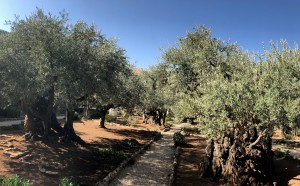
How authentically are we able to pray those words?
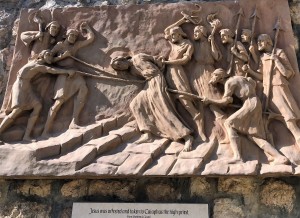
“Then the detachment of soldiers with its commander and the Jewish officials arrested Jesus. They bound him and brought him .”
In what ways are we complicit in binding Jesus and attempting to take him where WE want him to go?
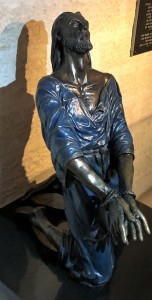
“It was your people and your chief priests who handed you over to me,” Pilate said. “What is it you have done?”
Jesus said, “My kingdom is not of this world. If it were, my servants would fight to resist my arrest by the Jews. But now my kingdom is from another place.” – John 18:35-36
Whose rule do we follow? Whose kingdom do we serve and seek?
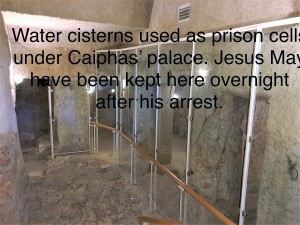
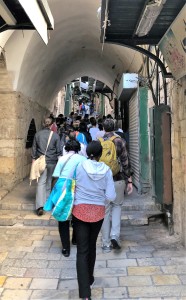
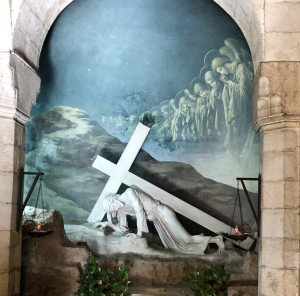
” … though he was in the form of God, he did not count equality with God a thing to be grasped, but emptied himself, taking the form of a servant, being born in the likeness of men….”
When have we stood back and watched Christ shoulder the burden of the world’s brokenness all alone?
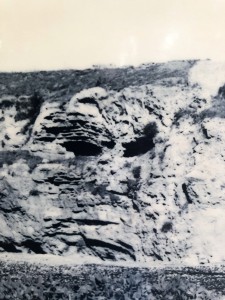
Gaze upon the actual face of Golgotha, the place of the skull. Consider how lifeless and bereft it must have looked to Jesus as he dragged his cross to where he would hang. Try to imagine how abandoned, lonely and desperate Jesus must have felt.
